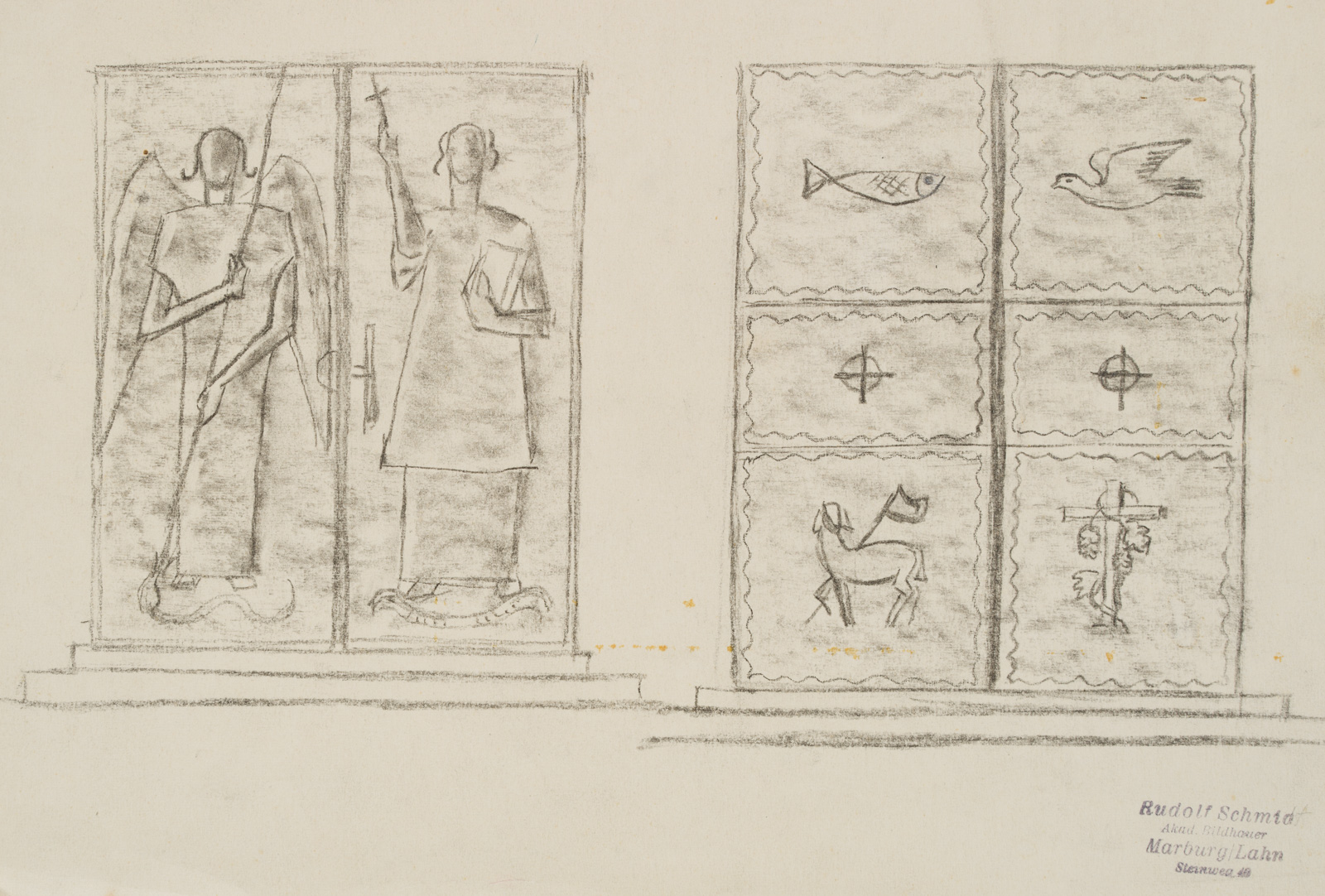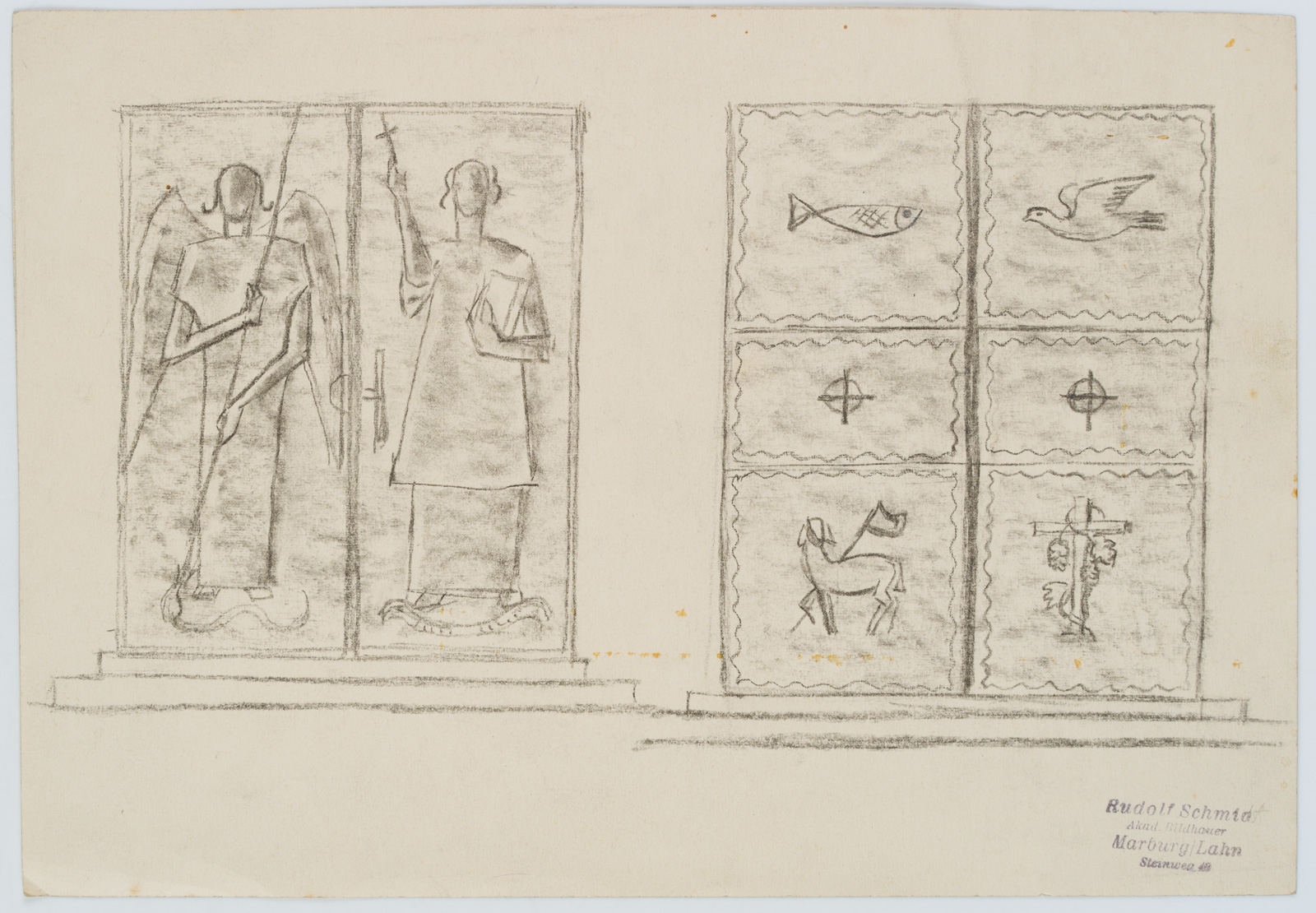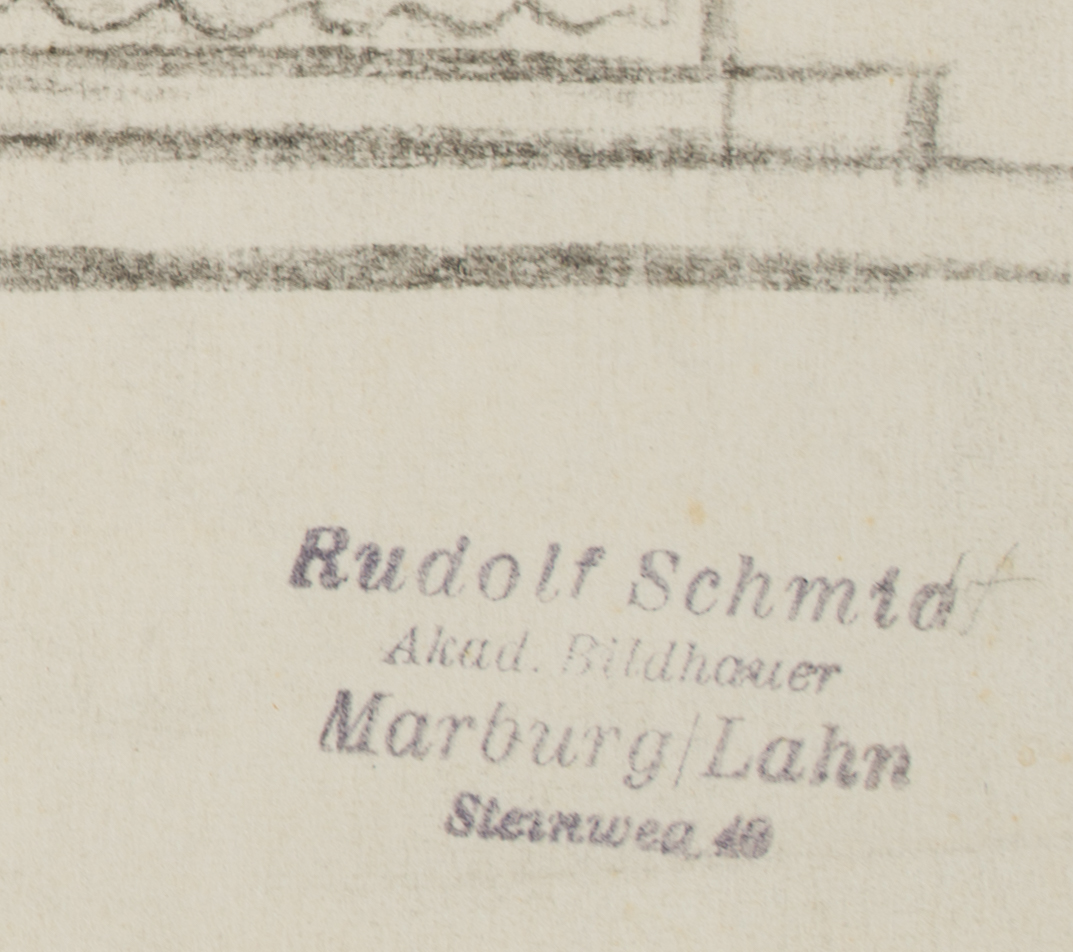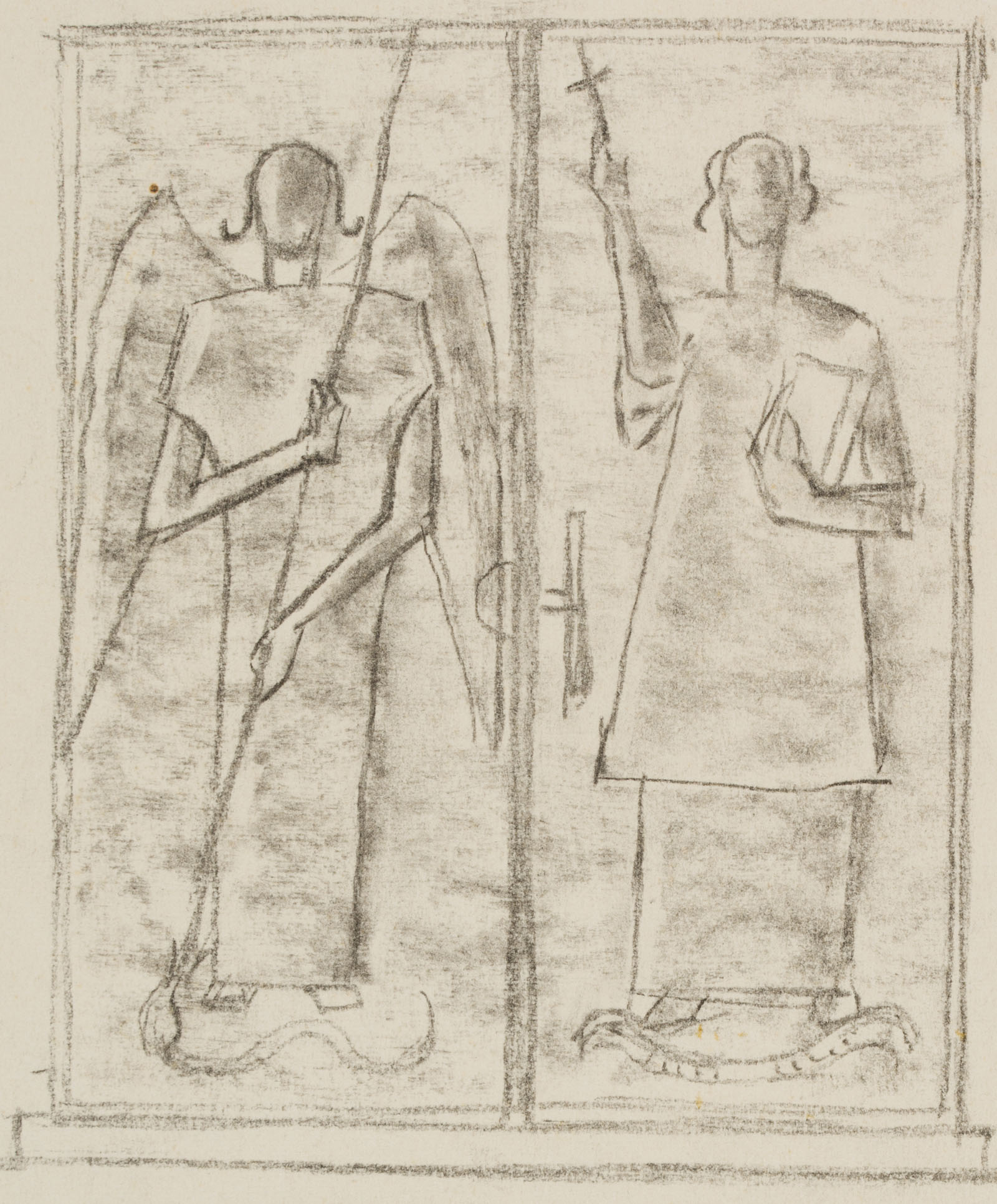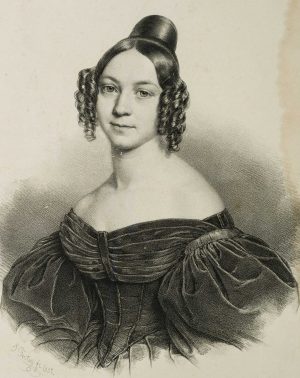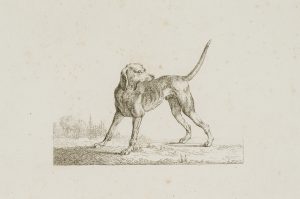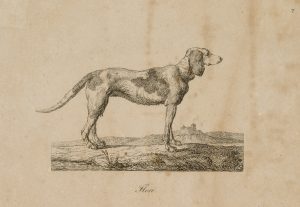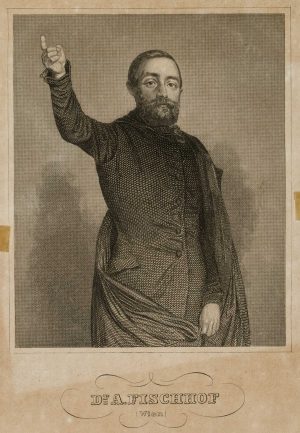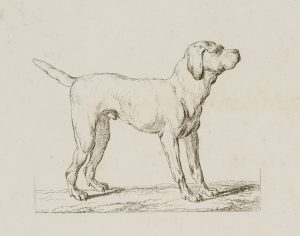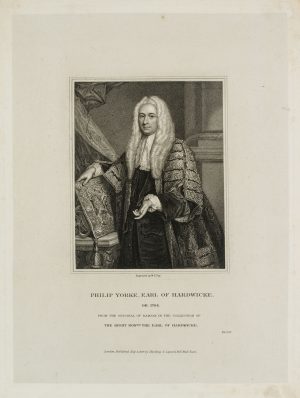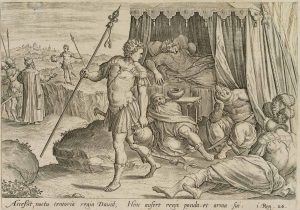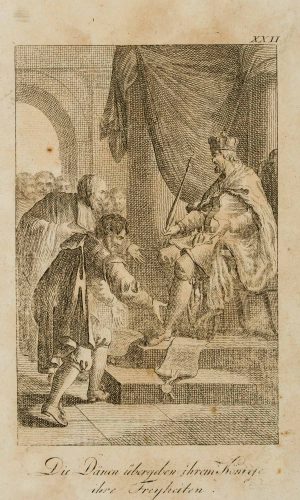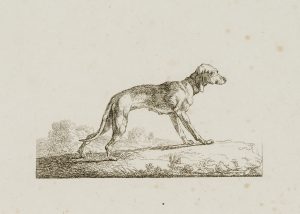Rudolf Schmid (1896 Dolní Rychnov u Falknova – 1971 Marburg an der Lahn), Entwurfszeichnung für einen kunstvoll gestalteten Schrein, Tabernakel, mit Symbolen des Christentums: Fisch, Taube, Agnus Dei und Kreuz mit Weinrebe, um 1960, Bleistift
- Technik: Bleistift auf Papier
- Bezeichnung: Unten rechts auf der Unterlage mit Stempel: “Rudolf Schmid / Akad. Bildhauer / Marburg/Lahn / Steinweg 10”.
Aus der Hand des akademischen Bildhauers Rudolf Schmid, ein in Marburg wirkender Künstler, der gegen Ende des zweiten Weltkrieges seine sudetendeutsche Heimat verlassen musste und in die Universitätsstadt verschlagen wurde. - Datierung: um 1960
- Schlagworte: Religiös, Architektur, Deutschland, Gegenständlich, 1950-1969
- Größe: 21,2 cm x 30,5 cm
- Zustand: Guter Zustand. Das Papier ist altersbedingt verfärbt. Das Papier ist stellenweise leicht knittrig. Die Darstellung macht einen sehr guten Eindruck. Stellenweise sind bräunliche Flecken festzustellen.
English Version:
Rudolf Schmid (1896 Dolní Rychnov near Falknov – 1971 Marburg on the Lahn), Design drawing for an artistically designed shrine, tabernacle, with symbols of Christianity: fish, dove, Agnus Dei and cross with vine, c. 1960, Pencil
- Technique: Pencil on Paper
- Inscription: Stamped lower right on the backing: “Rudolf Schmid / Akad. Bildhauer / Marburg/Lahn / Steinweg 10”.
From the hand of the academic sculptor Rudolf Schmid, an artist working in Marburg who had to leave his Sudeten German homeland towards the end of the Second World War and was displaced to the university town. - Date: c. 1960
- Keywords: 20th century, Figurative, Religious, Germany,
- Size: 21,2 cm x 30,5 cm (8,3 x 12 in)
- Condition: Good condition. The paper is discoloured due to its age. The paper is slightly creased in places. The illustration makes a very good impression. In places there are brownish stains.

